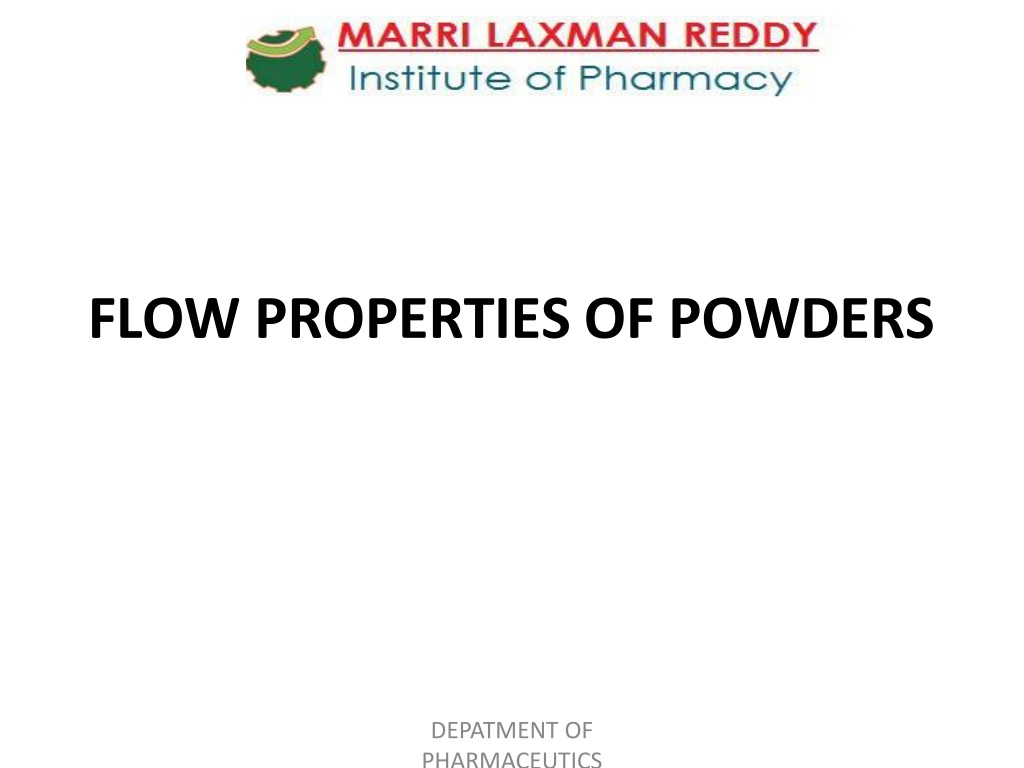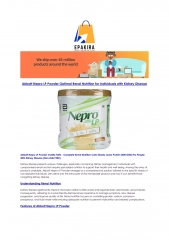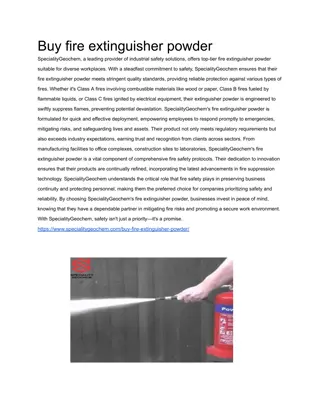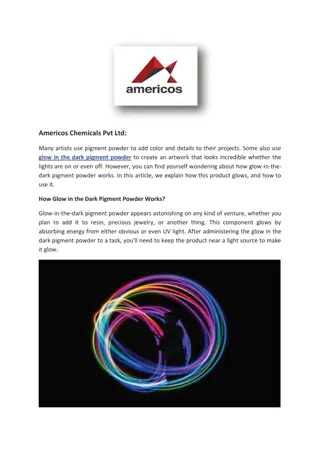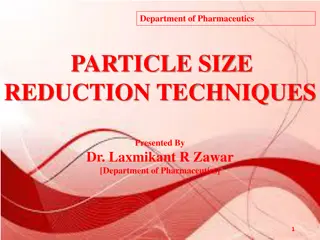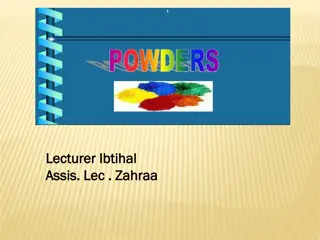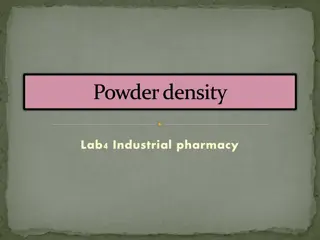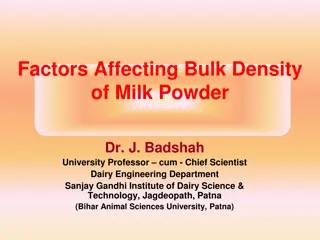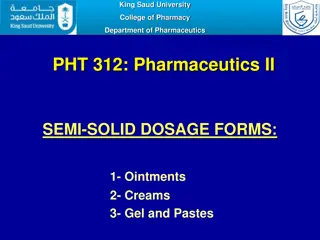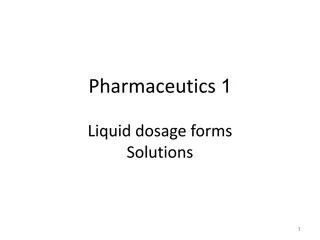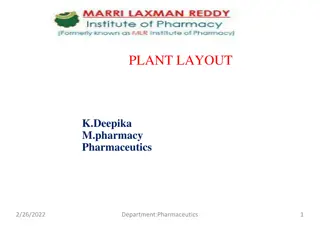Understanding Powder Flow Properties in Pharmaceutics
Powder flow properties play a crucial role in pharmaceutical manufacturing processes. Free-flowing or cohesive powders can lead to various challenges like uneven flow, caking during storage, and issues in dosing uniformity. Testing methods such as Carr's compressibility index and Hausner ratio help evaluate powder flowability, providing insights into potential manufacturing problems.
Download Presentation

Please find below an Image/Link to download the presentation.
The content on the website is provided AS IS for your information and personal use only. It may not be sold, licensed, or shared on other websites without obtaining consent from the author. Download presentation by click this link. If you encounter any issues during the download, it is possible that the publisher has removed the file from their server.
E N D
Presentation Transcript
FLOW PROPERTIES OF POWDERS DEPATMENT OF PHARMACEUTICS
Powders may be free-flowing or cohesive(Sticky). Many common manufacturing problems are attributes to powder flow. 1. Powder transfer through large equipment such as hopper. 2. Uneven powder flow excess entrapped air within powders capping or lamination. 3. Uneven powder flow increase particle s friction with die wall causing lubrication problems and increase dust contamination risks during powder transfer. DEPATMENT OF PHARMACEUTICS
4. Powder storage, which for example result in caking tendencies within a vial or bag after shipping or storage time. 5. Separation of small quantity of the powder from the bulk-specifically just before the creation of individual doses such as during tableting, encapsulation and vial filling which affect the weight uniformity of the dose (under or over dosage). DEPATMENT OF PHARMACEUTICS
Powder flow problems DEPATMENT OF PHARMACEUTICS
Tests to evaluate the flowability of a powder. 1. Carr s compressibility index. 2. Hausner ratio. 3. The angle of repose ( ). DEPATMENT OF PHARMACEUTICS
Carrs compressibility index A volume of powder is filled into a graduated glass cylinder and repeatedly duration. The volume of powder after tapping is measure. tapped for a known Tapped density - Poured or bulk density Carr s index (%) = Tapped density Bulk density= weight/bulk volume Tapped density=weight/true volume X100 DEPATMENT OF PHARMACEUTICS
Carrs compressibility index Relationship between powder flowability and % compressibility Flow description Excellent flow Good Fair Poor Very Poor Extremely poor % Compressibility 5 15 16 18 19 21 22 35 36 -40 40 DEPATMENT OF PHARMACEUTICS
Hausner ratio Tapped density Hausner ratio= Poured or bulk density Hausner ratio was related to interparticle friction: Value less than 1.25 indicates good flow (=20% Carr). DEPATMENT OF PHARMACEUTICS
Hausner ratio The powder with low interparticle friction, such as coarse spheres. V alue greater than 1.5 indicates poor flow (= 33% Carr s Compressibility Index)). More cohesive, less free-flowing powders such as flakes. Between 1.25 and 1.5 added glidant improves flow. 1.5 added glidant doesn t improve flow. normally DEPATMENT OF PHARMACEUTICS
The angle of repose ( ) The sample is poured onto the horizontal surface and the angle of the resulting measured. pyramid is The user normally selects the funnel orifice through which the powder flows reasonably constantly. slowly and DEPATMENT OF PHARMACEUTICS
The angle of repose ( ) 1. Angle of repose less than 20 (Excellent flow). 2. Angle of repose between20-30 (Good flow). 3. Angle of repose between 30-40 (Pass flow). 4. Angle of repose greater than 40 (Poor flow). The rougher and more irregular the surface of the particles, the higher will be the angle of repose. DEPATMENT OF PHARMACEUTICS
Factors affecting the flow properties of powder Improvement of Powder Flowabilty Particle Shape & texture Particle s size & Distribution Surface forces Flow Activators DEPATMENT OF PHARMACEUTICS
Factors affecting the flow properties of powder 1. Alteration of Particle s size & Distribution 2. Alteration of Particle shape & texture 3. Alteration of Surface Forces 4. Formulation additives (Flow activators) DEPATMENT OF PHARMACEUTICS
Factors affecting the flow properties of powder Alteration of Particle s size & Distribution There is certain particle size at which powder s flow ability is optimum. Coarse particles are more preferred than fine ones as they are less cohesive. The size distribution can also be altered to improve flowability by removing a proportion of the fine particle fraction or by increasing the proportion of coarser particle s such as occurs in granulation. DEPATMENT OF PHARMACEUTICS
Factors affecting the flow properties of powder Alteration of Particle shape & texture Particle s Shape Generally, more spherical particles have better flow properties than more irregular particles. Spherical particles are obtained by spray drying, or by temperature cycling crystallization. DEPATMENT OF PHARMACEUTICS
Factors affecting the flow properties of powder Alteration of Particle shape & texture Particle s texture Particles with very rough surfaces will be more cohesive and have a greater tendency to interlock than smooth surfaced particles. DEPATMENT OF PHARMACEUTICS
Factors affecting the flow properties of powder Alteration of Surface Forces Reduction of electrostatic flowability. Electrostatic charges can be reduced by altering process conditions to reduce frictional contacts. Moisture content of particle greatly affects powder s flowability. Adsorbed surface moisture films tend to increase bulk density and reduce porosity. Drying the particles will reduce the cohesiveness and improve the flow. Hygroscopic powder s stored and processed under low humidity conditions. charges can improve powder DEPATMENT OF PHARMACEUTICS
Factors affecting the flow properties of powder Formulation additives (Flow activators) Flow activators are commonly referred as a glidants. Flow activators improve the flowability of powders by reducing adhesion and cohesion. e. g. Talc, maize starch and magnesium stearate. DEPATMENT OF PHARMACEUTICS
THANK YOU DEPATMENT OF PHARMACEUTICS
